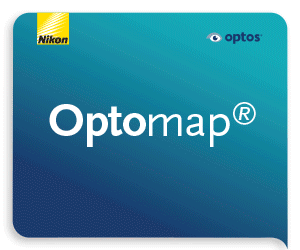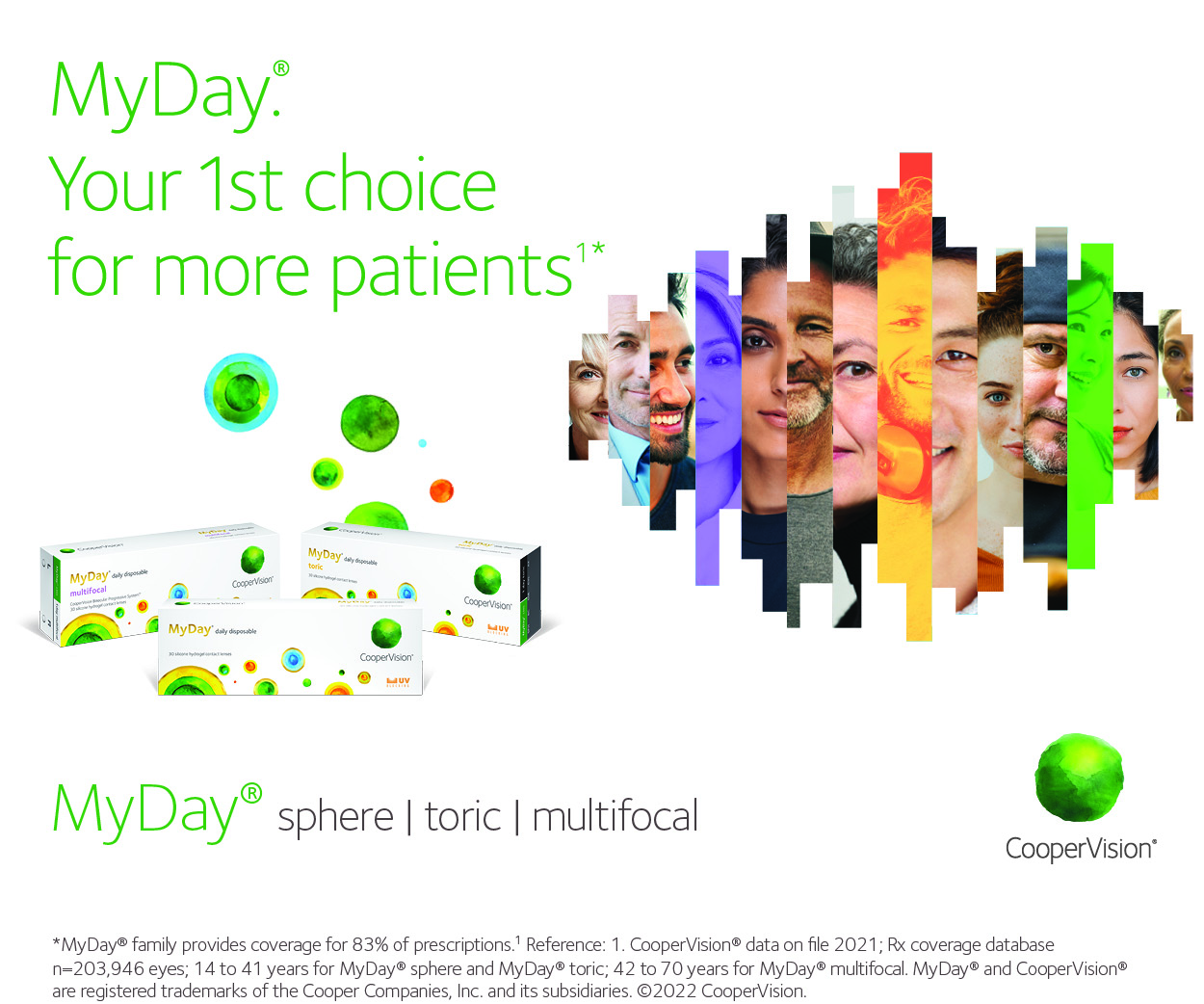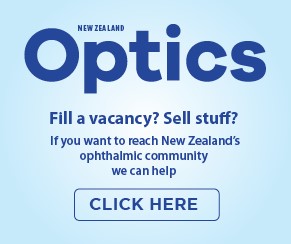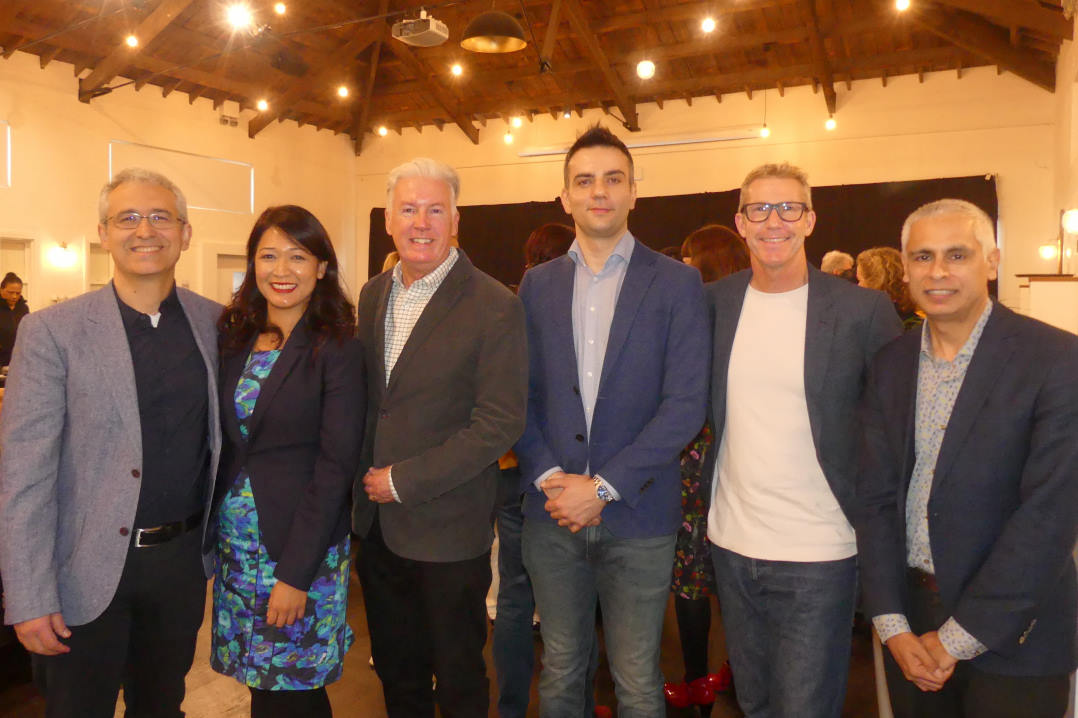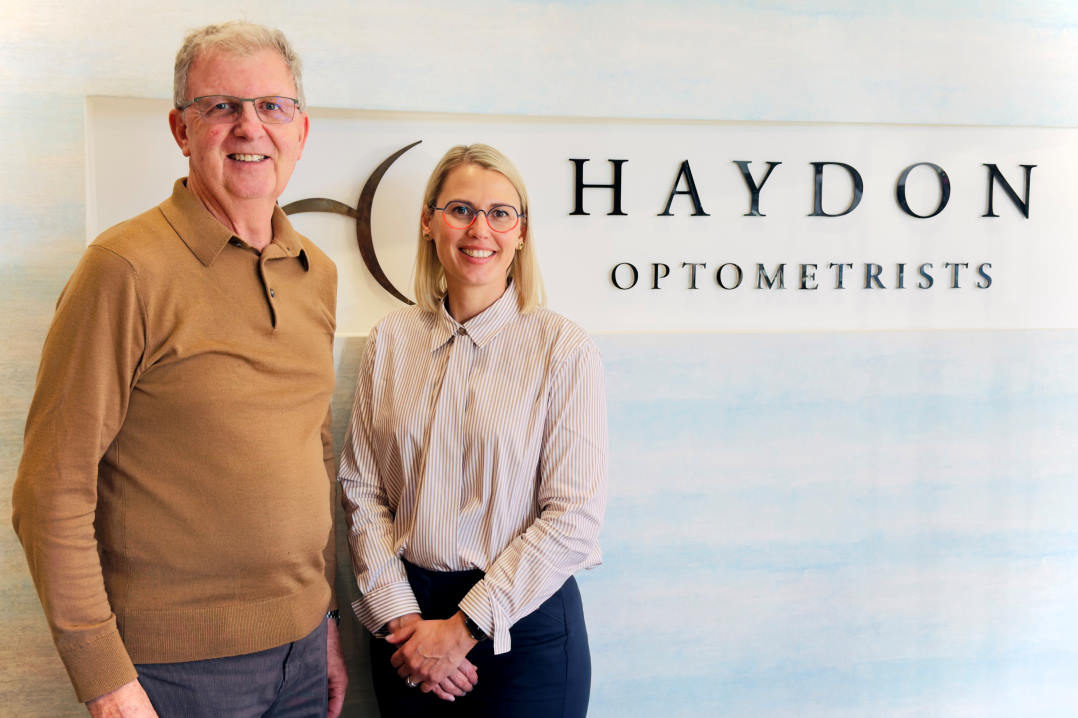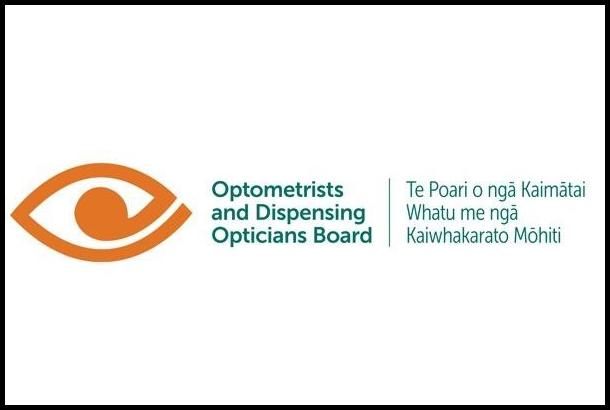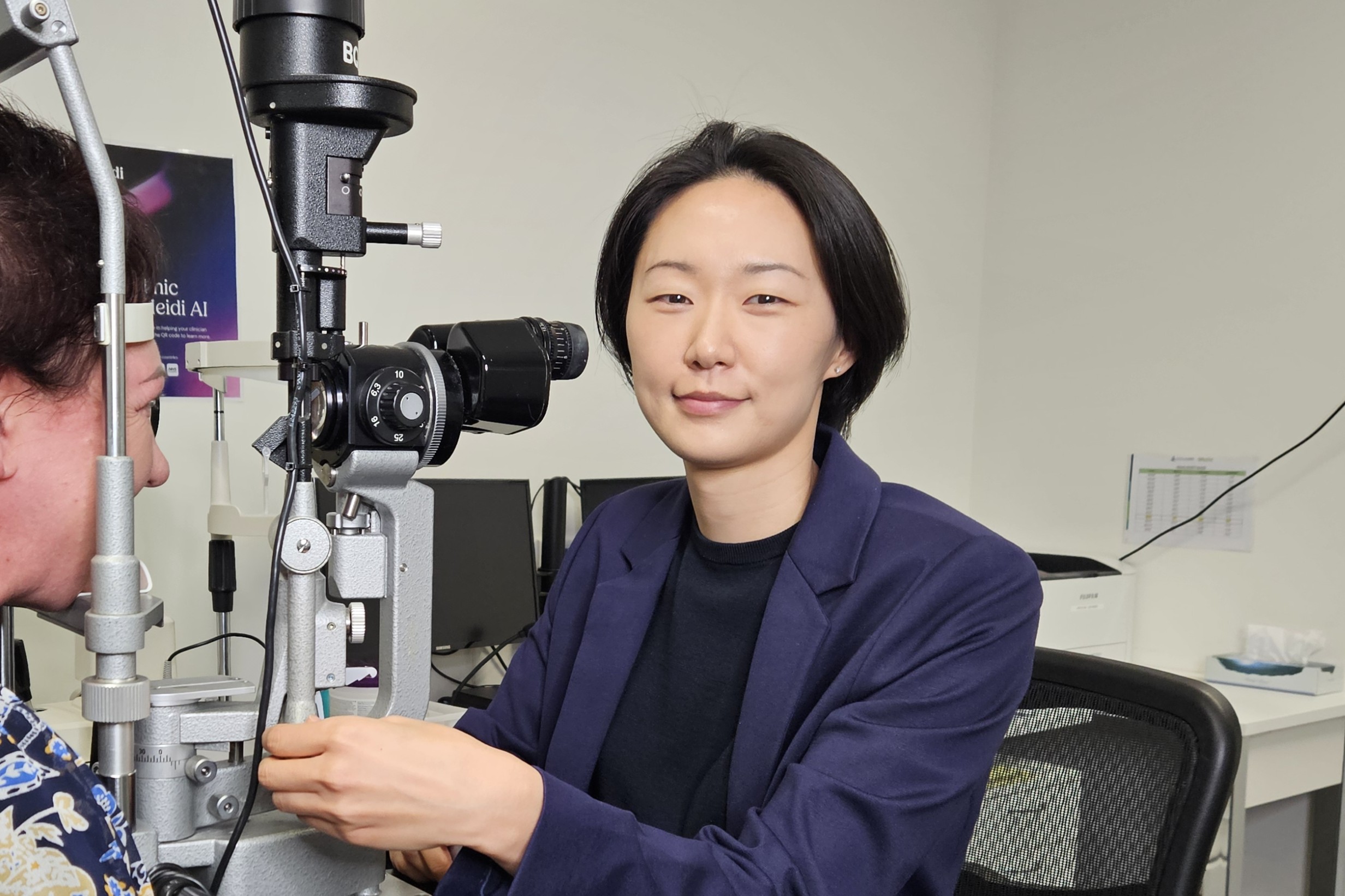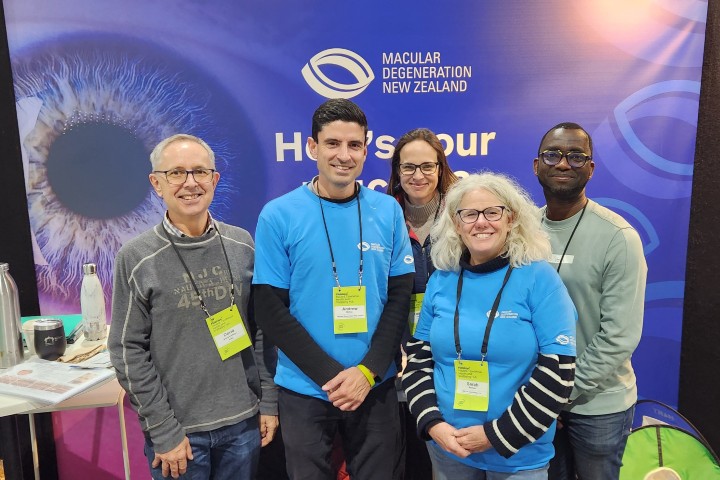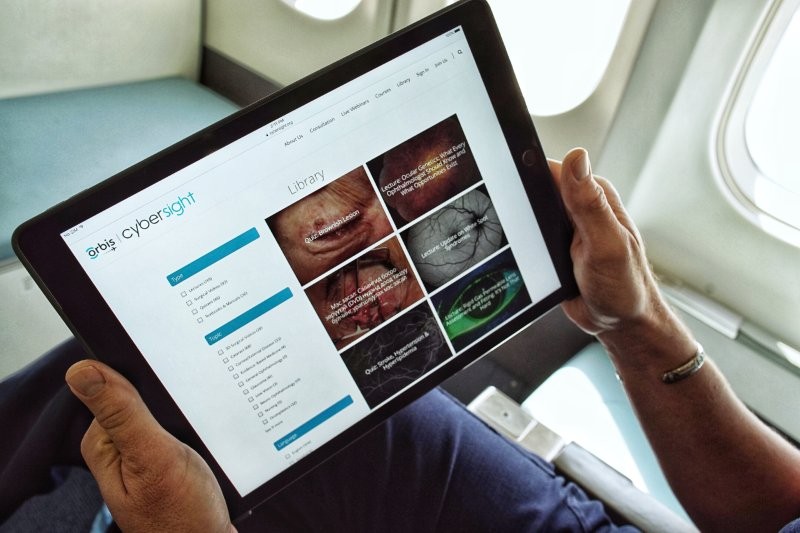Cataracts, comorbidities and co-management
After navigating the road tunnel to the centre of Ellerslie Racecourse and the pedestrian tunnel back to the other side on a cold, wet Sunday morning, the warm lights of the brick-built Tote On Ascot were a welcome sight for this year’s Re:Vision co-management conference.
Having outgrown previous venues, Re:Vision’s second year at Tote was obviously a hit, attracting 100-plus optometrists for breakfast and some quick-fire CPD presentations from Re:Vision’s four red-shoe-wearing ophthalmologists, Drs Trevor Gray, Mo Ziaei, Divya Perumal and Simon Dean. Dr Gray took up the mantle of MC, introducing his colleagues, who each delivered three presentations, and the morning’s two guest speakers, Drs Clairton de Souza and Hussain Patel.
Cataracts, corneal disease and unhappy patients
Dr Ziaei focused on pre- and post-op corneal disorders to optimise cataract surgery outcomes. The most common corneal disease is Fuchs’ dystrophy, a progressive endothelial disease affecting about 7.3% of adults, especially women, over the age of 30. Genetic predisposition is a key risk factor and symptoms often become more pronounced after the age of 50, he said.

DFV's Ralph Thompson with David Haydon and Wendy Hill
The surgical trauma of routine cataract surgery can push a compromised Fuchs’ cornea into irreversible decompensation and oedema, given the average endothelial cell loss with phaco is about 10%, said Dr Ziaei. Managing expectations is far easier if a patient already knows about their condition, likely visual recovery and long-term prognosis, he said.
Patients who’ve undergone keratoplasty also present significant issues for cataract surgery, said Dr Ziaei. Refraction and the graft should both be stable before surgery is even considered, which ideally should be no earlier than 12 months post-transplant. Post-op, inflammation should be managed aggressively and intraocular pressure (IOP) and graft clarity should be monitored frequently, he said.
In his next talk, Dr Ziaei revealed that immediately sequential bilateral cataract surgery (ISBCS) is now the norm for Re:Vision’s patients, with 70–80% of his own patients choosing to have both eyes done on the same day. Satisfaction levels are extremely high but, even with extensive patient education and expectation management and thorough pre- and post-op care, a few patients will still be unhappy, he said, especially if there is an expectation mismatch.

Tony Yuan, Dr Mo Ziaei, Robert Ng, Dr Simon Dean and Deb Moncur
Cataract surgery risk factors include the patient’s age, if they have diabetes, allergic tendencies (especially to BAK, the preservative used in many eye drops, including those used post-cataract surgery), conjunctivochalasis or are likely to require increased surgical time. Patients’ ocular surface issues should be addressed before surgery, stressed Dr Ziaei, with dry eye disease treated “aggressively” for at least four weeks prior to surgery, even if that means delaying the procedure.
Since prevention is far better than cure and patient education is key, he said, the more a surgeon knows about a patient from their optometrist before surgery, the better the likely outcome. Other useful tips include telling patients to remove their RGP lenses at least two weeks – and soft lenses two to three days – prior to surgery, ensuring patients have undertaken a contact lens trial if correcting for myopia and checking for any retinal conditions prior to surgery. “The best way to deal with post-op issues is to not have to deal with them, because we have taken the time to understand what patients want before surgery,” said Dr Ziaei.

Jacqueline Ling, Wen Li Keng and Run Tang Li
Gonioscopy, angle closures and IOP fluctuations
Focusing on glaucoma patients, optometrist-turned-ophthalmologist Dr Perumal said gonioscopy is one of the most important tools eyecare professionals have. Her tips to maximise its effectiveness include clearly explaining to the patient what’s going to happen and why, darkening the room to an illumination equivalent of a computer screen, tilting the goniolens to avoid central corneal reflections and systematically scanning all four quadrants, starting with the inferior.
![]()

Optometry sisters Melody and Tiffany Ong with Dr Divya Perumal (centre)
Her next talk focused on primary angle closure disease. This is now understood to be a spectrum, ranging from primary angle closure suspect (PACS) to primary angle closure (PAC) and ultimately primary angle closure glaucoma (PACG). The Zhongshan angle-closure prevention (ZAP) trial found that laser peripheral iridotomy (LPI) reduced the risk of progression, but the overall risk of progression in PACS eyes was low, even without treatment. Thus, prophylactic LPI should be reserved for those at higher risk of angle closure, she said.
Many daily activities impact a patient’s IOP, said Dr Patel, from coffee and yoga to playing wind instruments and wearing swimming goggles, but two of the biggest are stress and anxiety. Even the sight of a doctor’s white coat can result in a 2–3mmHg increase in IOP for some patients, he said. Optometrists should ask patients about activities and stress levels prior to their appointments if they present with an unusually elevated (or low) IOP and should never rely on single IOP measurements, he said.

Ella Ewens, Haidee Mannix and Stuart Laing
YAG, floaters, infectious keratitis and IOL decisions
Dr Dean’s first talk focused on YAG laser capsulotomy to treat posterior capsule opacification, which occurs in 20–50% of post-cataract surgery patients. YAG is “very safe”, he said, and only needs to be done once. But there are some risks, including lens pitting (often caused by patients moving) and floaters (expected in the first week, after which they settle). Intraocular lens (IOL) dislocation and retinal detachment are also reported risks, but Dr Dean said he’d never seen or even heard of these happening here. Following YAG, a patient’s vision should improve immediately and will continue to improve as the dilating drops wear off. It’s OK for them to drive, if they are comfortable, he said.
Dr de Souza also tackled floaters, quoting research demonstrating a strong association with anxiety and depression. One study found patients would accept a 7% risk of blindness and exchange one out of every 10 years of their remaining life to be rid of them (Wagle et al, 2011). Variations in floaters’ shape, size or density and how they move, along with a patient’s IOL status and coexistent pathology, mean they bother some patients more than others. Treatment with YAG-laser vitreolysis has been deemed ineffective or inadequate in studies. Vitrectomy, however, is effective, he said, normalising contrast sensitivity function and improving wellbeing, with few complications (less than 1% retinal detachment).

Seong Kyoung Lee, Sara Na and Eunji Baek
Dr Dean then updated the audience about his patented, New Zealand-designed handheld PhotonUVC device designed to destroy keratitis-causing microbes, which is going great guns in the UK veterinary sector and is heading to human trials in Auckland later this year. He ended his trio of talks wearing his oculoplastics hat, focusing on eyelid issues, which dovetailed well with Dr Ziaei’s previous tips for managing the ocular surface and led nicely into Dr Perumal’s final talk on cataract surgery for glaucoma patients.
Cataract surgery can influence IOP, so it complicates treatment decisions, said Dr Perumal. But early lens extraction (phacoemulsification) can be more effective than LPI in certain cases of PACG and lead to IOP control, fewer glaucoma medications and improved patient-reported outcomes, as evidenced by the EAGLE trial, she said.

Donald Klaassen, Trevor Skinner and Keith Miller
With increasing knowledge about modern IOLs, patients’ outcome expectations are increasing, said Dr Ziaei, with presbyopia-correction now a key priority for many. Blended vision or implanting lenses with unequal refractive targets (with the dominant eye corrected for distance and the non-dominant for near), often with enhanced monofocal or EDOF lenses, has many advantages for patients, he said. This includes reduced dysphotopsia and high-quality distance vision, making it ideal for patients who previously used monovision contact lenses successfully. However, given the potential loss of binocular vision at some distances and variation in patients’ neuroadaptation, it’s not ideal for frequent night drivers, pilots or others who need high stereoacuity. Success depends on “meticulous patient selection”, he said.
Dr Ziaei then brought the half-day session to a close, stressing that the best patient outcomes rely on good co-management and prioritising individualised treatments for patients.




